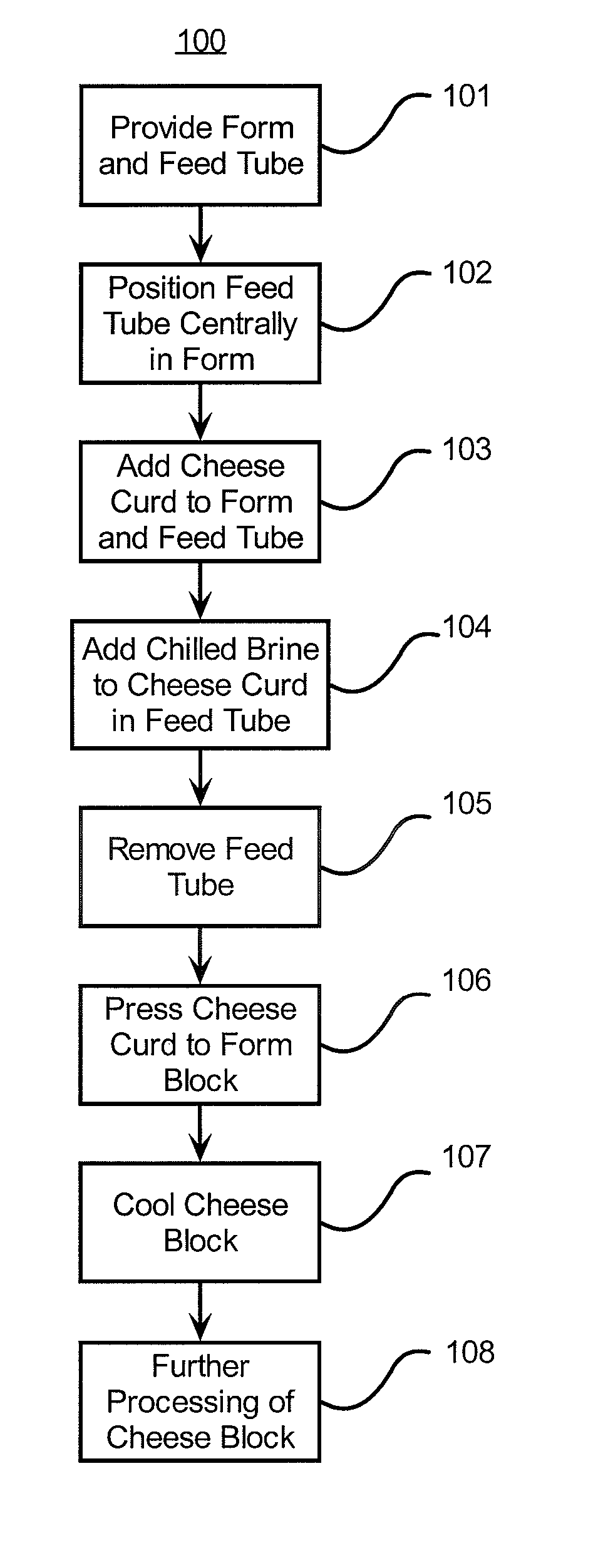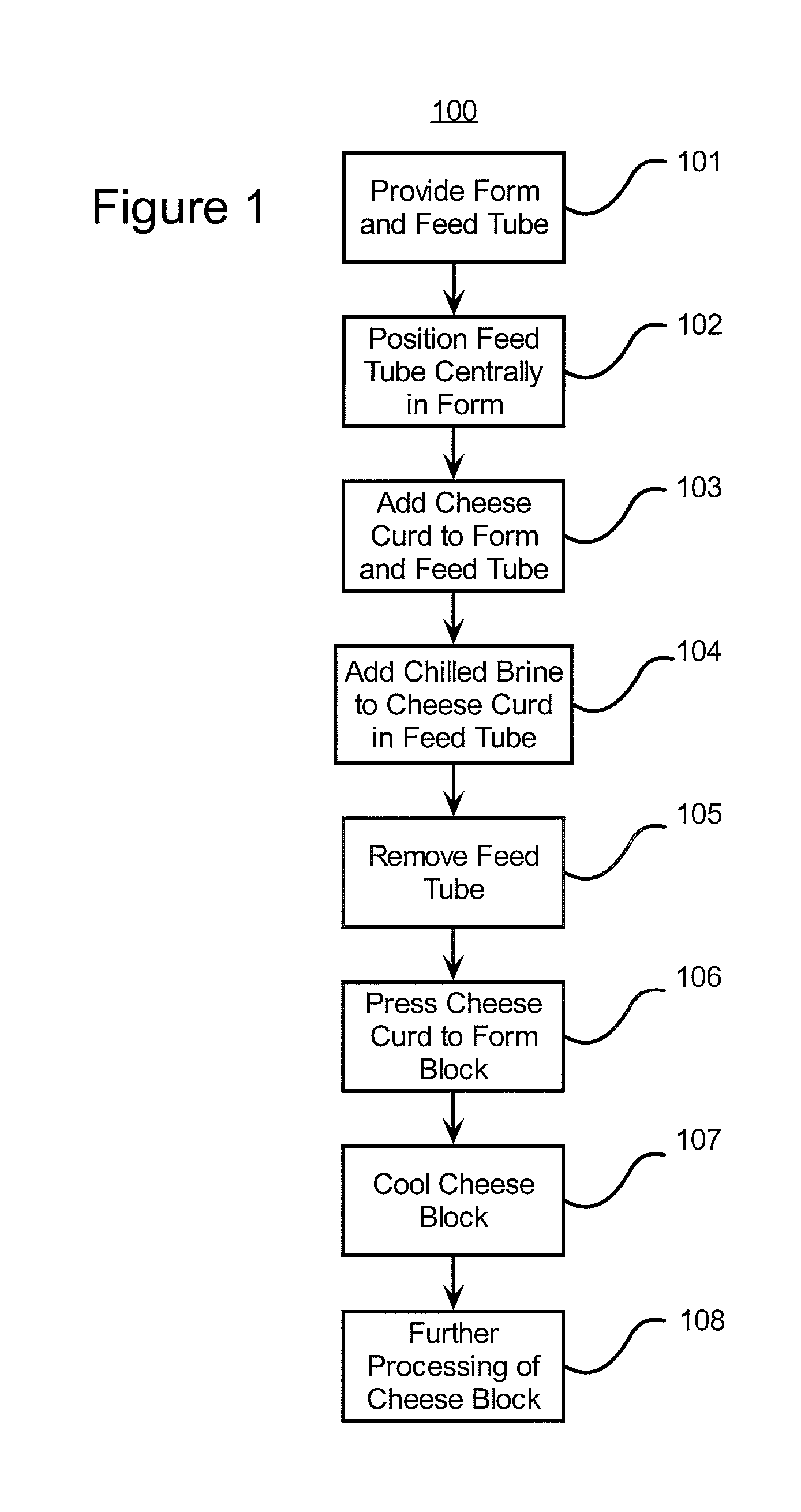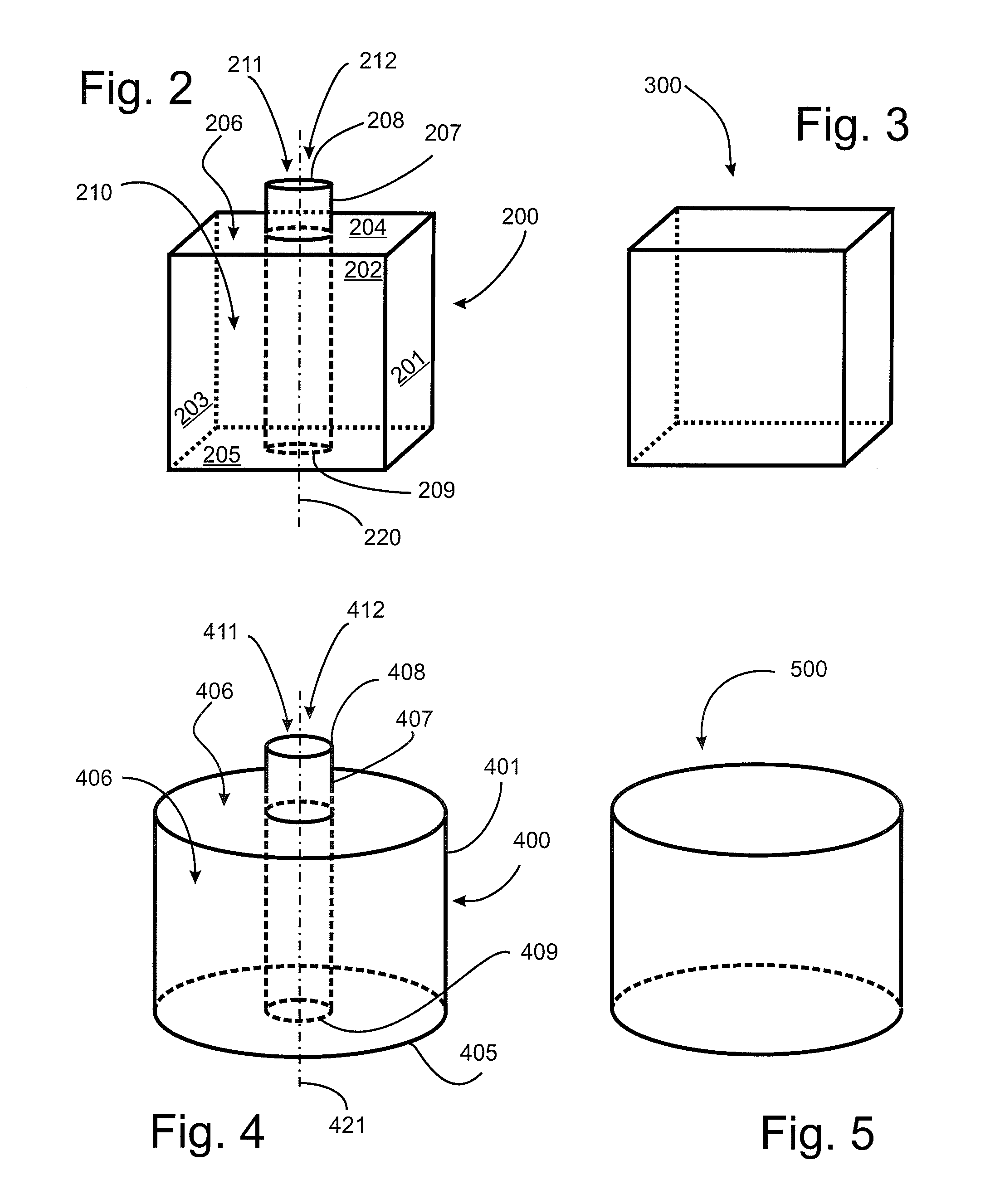Methods and Apparatus for the Reduction of Moisture Variability in Large Cheese Blocks
- Summary
- Abstract
- Description
- Claims
- Application Information
AI Technical Summary
Benefits of technology
Problems solved by technology
Method used
Image
Examples
example 1
[0071] An experimental study was conducted to compare the moisture variability in a cheddar cheese block (“inventive”) made with brine core cooling prior to pressing, cooling, and post-processing, in accordance with the injection embodiment of the present invention, with a control cheese block (“control”) made in a conventional manner without the core cooling step.
[0072] A block of cheddar cheese (22×28×28 inches (side×side×height)) was manufactured by filling a form having internal dimensions suited to provide the desired product size with salted cheddar curd made in a conventional manner. A stainless steel, thin walled cylinder approximately 8 inch in diameter was positioned in the center of the form with its discharge end touching the axial central region of the bottom of the form. Approximately 640 pounds of cheese curd (67° F.) was then filled into the container and the inside of the tube. The tube was filled with curd to the same height as the cavity area of the form outside ...
example 2
[0076] A similar cheese block was prepared using the injection embodiment as in Example 1 except that two 8-inch diameter PVC tubes were used to introduce the chilled brine solution. The initial temperature of the cheese curd used to fill the container was 67° F. The temperatures of the outer and central portions of the cheese cured after introduction of the chilled brine were measured and the following results were obtained.
Temperature (° F.)TimeOuter PortionCentral PortionAfter Filling Container with6767Cheese CurdAfter Introduction of6750.5Chilled BrineAfter Pressing to Form6762Cheese Block*
*Approximately 10 to 12 minutes after introduction of chilled brine.
The moisture variability of the resulting cured cheese block was similar to that found in Example 1.
example 3
[0077] A similar cheese block was prepared using the injection embodiment as in Example 1 except that (1) the initial temperature of the curd used to fill the container was at 80° F. and (2) the amount of chilled brine added was varied. The conditions and results were as follows:
Chilled BrineCurd Temp (° F.)Moisture†Moisture DifferenceSampleAmount (lbs)Temp. (° F.)At Initial FillAt Center‡At Edge* (%)At Center* (%)Absolute (%)Relative Reduction (%)Control 10—80—46.1243.253.87—Inventive 18.627806443.8742.731.1470.5Control 20—80—46.6543.353.3—Inventive 212.927805643.9544.420.4785.7
†Measured after 10 days in cooler (temperature at 35-40° F.).
‡Measured within a few minutes of adding chilled brine.
*Measured at a depth of 12 inches.
PUM
 Login to View More
Login to View More Abstract
Description
Claims
Application Information
 Login to View More
Login to View More - R&D
- Intellectual Property
- Life Sciences
- Materials
- Tech Scout
- Unparalleled Data Quality
- Higher Quality Content
- 60% Fewer Hallucinations
Browse by: Latest US Patents, China's latest patents, Technical Efficacy Thesaurus, Application Domain, Technology Topic, Popular Technical Reports.
© 2025 PatSnap. All rights reserved.Legal|Privacy policy|Modern Slavery Act Transparency Statement|Sitemap|About US| Contact US: help@patsnap.com



